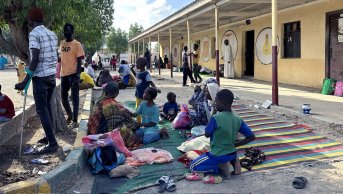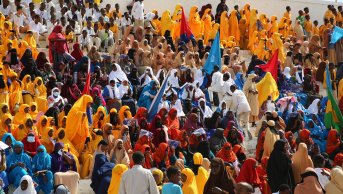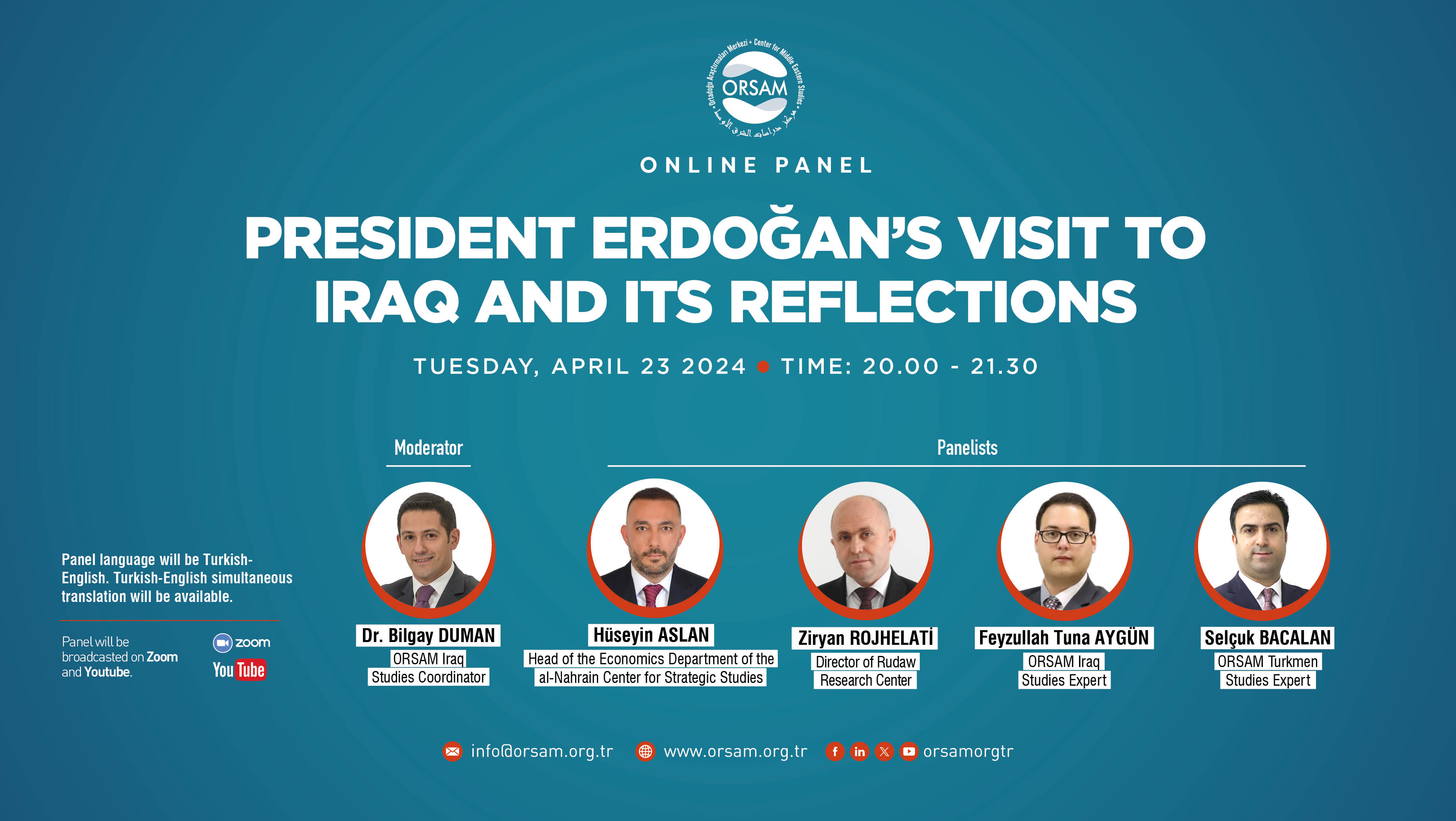A New Dimension in the Sudan Crisis: Clash Between Army and Rapid Support Forces
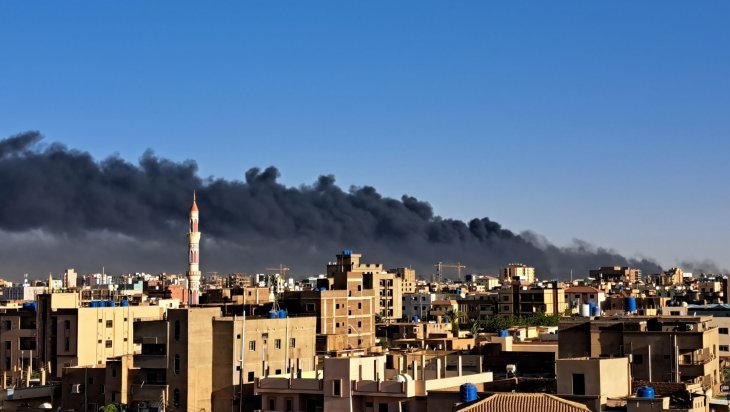
In Sudan, protests against President Omar al-Bashir erupted in December 2018, and in the aftermath, the Transitional Military Council (TMC) was established in April 2019 after the military seized power. In the subsequent step, negotiations were held between the Forces of Freedom and Change (FFC), the umbrella organization of the groups leading the protests against al-Bashir, and the TMC, which resulted in the agreement signed in August 2019, leading to a joint civil-military transitional administration headquartered in Khartoum. In this context, an 11-member Sovereignty Council was formed in partnership with six civilians. Hence, as chairman, Army Commander Abdel Fattah al-Burhan, vice-chairman, the Commander of the Rapid Support Forces (RSF) Mohamed Hamdan Dagalo, and six civil council members were elected. Subsequently, Abdalla Hamdouk was appointed by the Sovereignty Council as prime minister.
However, during the process, there was a disagreement between the civilians and the military over the administration. In October 2021, Army Commander Abdel Fattah al-Burhan and RSF Commander Mohamed Hamdan Dagalo carried out a second coup. In the upcoming phase, discussions continued between the actors for a new transitional administration with civilian partners, and the "Political Framework Agreement" was signed on December 5th, 2022. Later on, in the early morning hours of Saturday, April 15th, 2023, clashes broke out between the Army and the RSF.
The protests against the al-Bashir regime in Sudan that began in December 2018 triggered a process that can be divided into four main stages. These are: the April 2019 coup d’état against al-Bashir; the August 2019 agreement that established the Sovereignty Council with civilian-military partnership; the October 2021 military intervention in collaboration with Dagalo and Burhan, and the Political Framework Agreement signed on December 5th, 2022. In this context, the main objective of this study is to analyze the background and possible scenarios of the transformation of the political crisis into conflict in Sudan.
How did the clashes start?
Early on April 15th, clashes were reported between Sudan’s military forces. The Army Commander and Chairman of the Sovereignty Council, Abdel Fattah al-Burhan, and the Vice-Chairman, who also commands RSF forces, Mohamed Hamdan Dagalo, got into a confrontation. Both sides blame each other for triggering the first bullet, claiming they were not the aggressors but the ones exercising their right to self-defense. The immediate background of the incident is that on the night of April 12th, when an estimated 100 pickup trucks of RSF troops moved to take over Merowe Airport, about 200 kilometers north of Khartoum, where they encountered the Sudanese Armed Forces.
The strained relations between Dagalo and Burhan reflected in the media in recent months, reached a breaking point with the Merowe incident and turned into a hot clash in the early morning hours of April 15th. Both actors gave interviews to the al-Jazeera Arabic channel on April 15th and accused each other. The African Union (AU), United Nations (UN), Intergovernmental Authority on Development (IGAD), East African Community (EAC), European Union (EU), United States of America (USA), Turkiye, United Arab Emirates (UAE), Egypt, Kingdom of Saudi Arabia (KSA), and many other international actors called on the parties to end the fighting, ceasefire, and negotiate.
Since news of the conflict started appearing in the media, it has been observed that a striking perception effort has been carried out through the information provided on both online news and social media platforms. Although it was claimed that Merowe Airport was taken back from the RSF, videos published on the official social media account of the RSF revealed that Egyptian soldiers surrendered to the RSF. On the other hand, posts saying that RSF soldiers joined the Army were false accusations. Despite calls for a ceasefire by international actors and the evacuation of foreign diplomats and citizens, the clashes between the Army and the RSF are still ongoing in the capital Khartoum, as well as in many regions such as al-Kadarif, al-Ubeyd, Damazin, and Darfur.
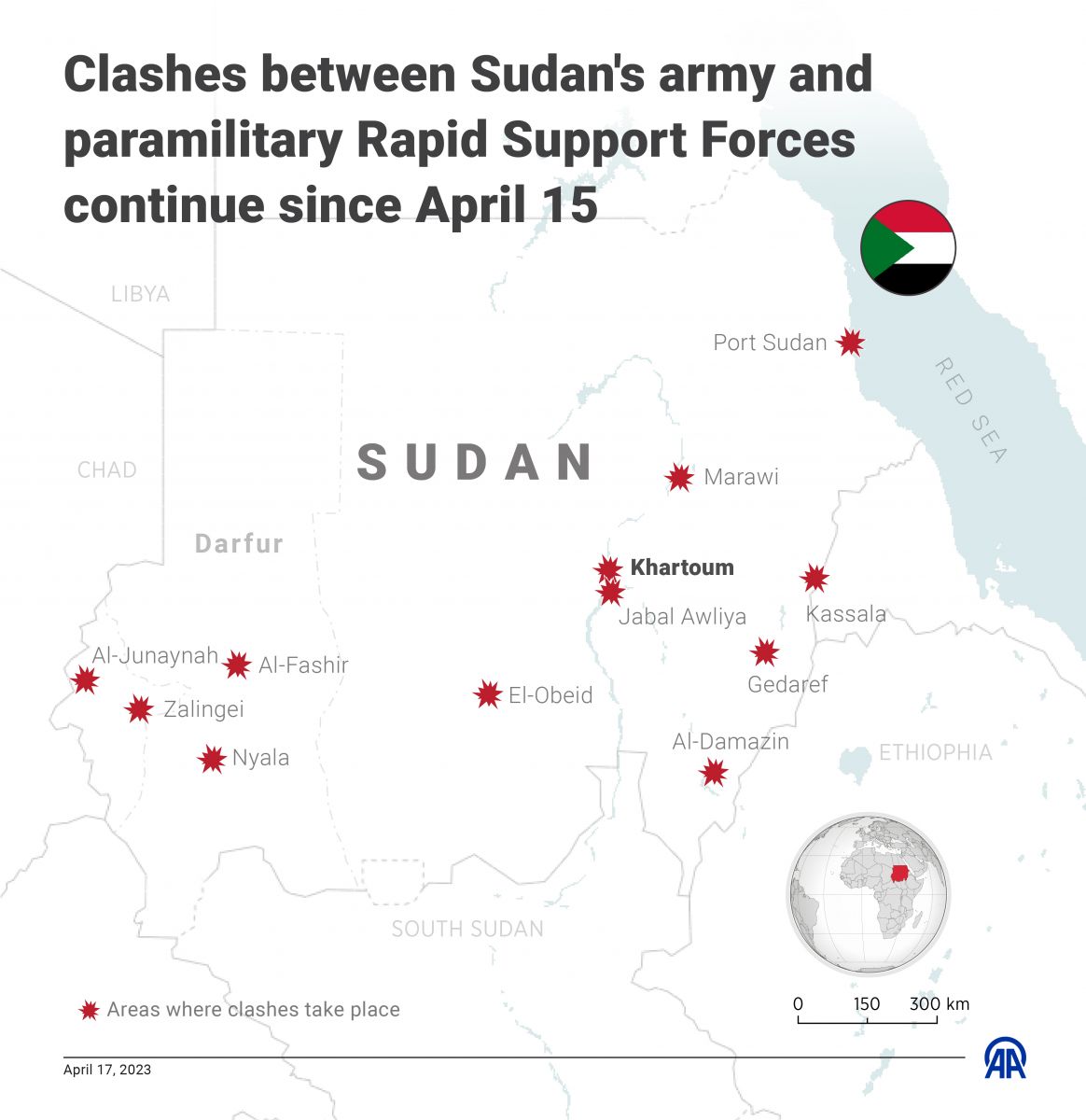
Primary Causes
The background of the clashes between the Army and the RSF in Sudan portrays a power struggle between the two actors, which was hidden from the public for a long time before evolving into a conflict. The Burhan and Dagalo alliance had been unable to appoint a prime minister for 18 months after the military intervention in October 2021. With the initiative of mediators led by the AU, the UN, and IGAD, a "Political Framework Agreement" was signed on December 5th by Burhan, Dagalo, and ten civilian actors within the Forces of Freedom and Change (FFC). The political explanation as to why Burhan and Dagalo could not reach an agreement depends on the events that occurred during the process leading up to their confrontation. These events include Dagalo's description of the October 2021 military intervention as a mistake; his diplomatic meetings in civilian clothes, which attracted the attention of political and military leaders; Dagalo's emphasis on democratic transition in preparing for a civilian political alliance; both al-Burhan's and Dagalo's deployment of more troops to Khartoum in recent months; Dagalo's desire to have equal security and training equipment with the RSF (he requested military helicopters from Russia but was not given); the RSF's acceptance of a single army, but Dagalo wants integration within ten years, while Burhan wants it to be completed in 2 years, though Dagalo's soldiers are paid more than Sudanese Army soldiers; Dagalo's dissatisfaction with the rapprochement of Ali Karti, former Foreign Minister under Al-Bashir and Commander of the People's Defense Forces, with al-Burhan.
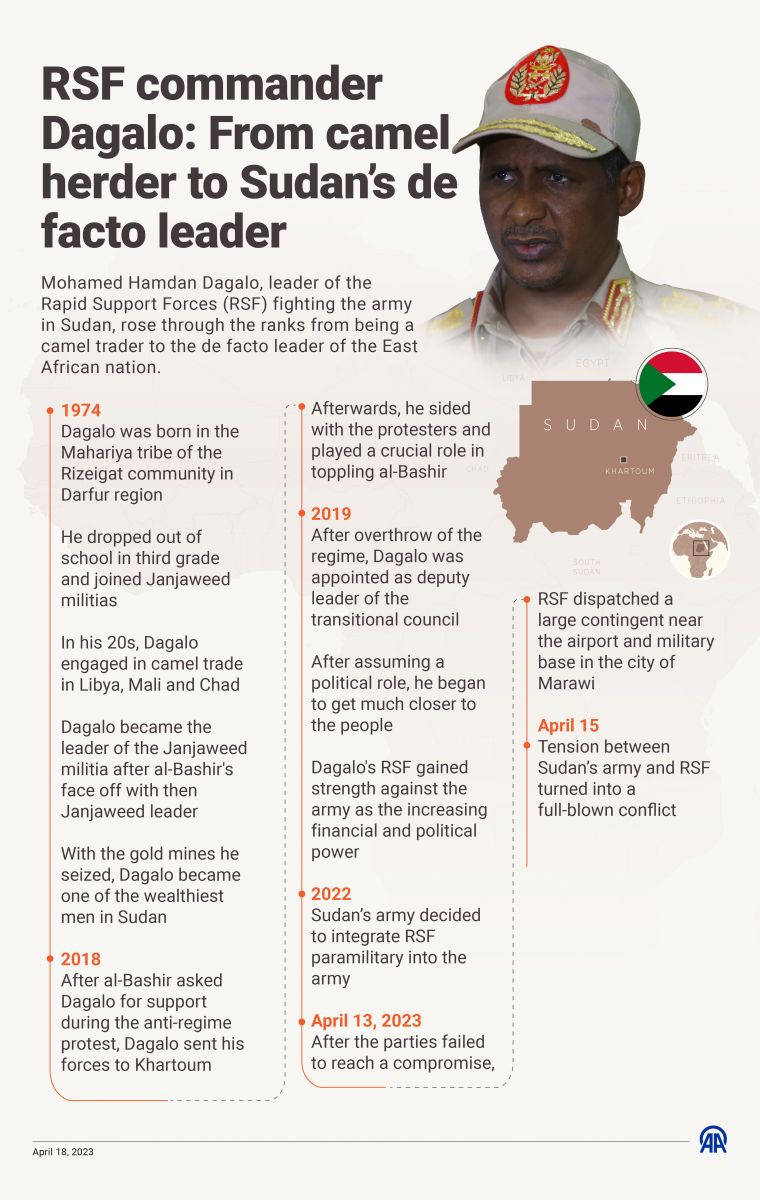
Possible Scenarios
There are three possible scenarios for the conflict in Sudan: One unlikely scenario would be defeating the other party in the short term. The Sudanese Army, led by Abdel Fattah al-Burhan, has land and air defense power equipped with conventional weapons. In contrast, the RSF, led by Mohamed Hamdan Dagalo, is a guerrilla in urban conflicts due to its experience in Darfur. The other two scenarios would include the possibility of continuing the conflict for many years, and the parties could sign a peace agreement with the initiative of mediating actors.
Dagalo's remarkably close ties with the UAE and Russia could facilitate an escalation of fighting following the evacuation of civilians from Khartoum. Given Sudan's approximately 390 different tribal components and the positioning of militias inherited from 30 years of Bashir's rule favoring one side, the protracted and widespread conflict between the Army and the RSF could be a key factor. In this sense, the Army and the RSF will likely try to convince and align with these militias. Recently, the Beja High Council in Port Sudan declared its allegiance to the Army, which could be given as an example. Similarly, the RSF has taken initiatives both prior to and during the conflict, particularly in the Darfur region.
While international actors have tried to extend the ceasefire in the conflict between the Army and the RSF, the engagement between the parties has not entirely ceased. Both actors continue to deploy troops in Khartoum. The fact that both sides have significant military power and the warning from the UN Secretary-General's Special Envoy for Sudan, Volker Perthes, that the winning side will be isolated may encourage both actors to negotiate. Currently, there are trilateral mediation initiatives by the UN, AU, and IGAD and quadrilateral mediation initiatives by the USA, UK, KSA, and UAE. The parties' conflict based on political, military, and economic power could be ended through economic sanctions through mediated talks enhanced by international actors.
In conclusion, given the RSF's effectiveness in different regions, especially in South Darfur, it is hoped that the conflicts between the parties in Sudan will turn into a "permanent ceasefire and negotiations." Otherwise, the Sudanese Army, based on its military capacity, will likely push the RSF away from the capital, and the conflict will intensify, especially outside Khartoum. This scenario may escalate with clashes between militias other than the Army and Dagalo. In this context, it could be observed that clashes between Dagalo and the militias of Musa Hilal, the tribal leader of the Arab Mahamid tribe in Darfur, Abdulwahid al-Nur, the leader of the Sudan People's Liberation Movement, and Mini Arko Minawi, the head of Darfur State would be seen, and the Army may provide support for these groups.


